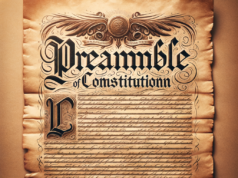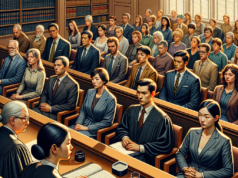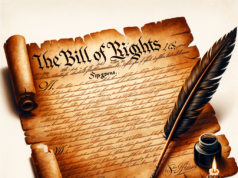
The Constitution of the United States is the supreme law of the land. It was written in 1787 by the Founding Fathers and ratified in 1788. The Constitution outlines the powers and duties of the federal government, including the three branches of government: the legislative, executive, and judicial branches. It also outlines the rights and freedoms of citizens, including the Bill of Rights, the first ten amendments to the Constitution.
The Constitution is an enduring document that has stood the test of time and has been amended only 27 times since its creation. The first ten amendments, known as the Bill of Rights, were added in 1791 to ensure that individual rights were protected. These amendments include the freedom of speech, religion, and the press; the right to bear arms; and protections against unreasonable searches and seizures.
The Constitution is divided into seven articles, with each article outlining different aspects of the government’s structure and responsibilities. The first article outlines the powers of the legislative branch, including the composition of Congress and the procedures for passing laws. The second article outlines the powers of the executive branch, including the president’s powers and responsibilities. The third article sets up the judicial branch, including the establishment of the Supreme Court.
The Constitution also outlines the relationship between the federal government and the states. The tenth amendment reinforces the concept of federalism, stating that any powers not explicitly granted to the federal government are reserved for the state governments.
Amending the Constitution is a challenging process. An amendment can only be proposed either by two-thirds of both houses of Congress or by a constitutional convention called for by two-thirds of state legislatures. Ratification requires the approval of three-fourths of state legislatures or conventions.
In conclusion, the Constitution is a foundational document that outlines the structure and responsibilities of the federal government. It also protects the individual rights and freedoms of citizens. The Constitution has endured for over two centuries and has only been amended 27 times due to the complex amendment process. Understanding the Constitution is essential to understanding the structure and principles of the United States government.
Preamble
The Preamble to the Constitution is not vital from a purely legal perspective, as the Preamble does not have any legal value in and of itself. The Preamble is also a very short part of the Constitution, as it is actually a single sentence, and therefore, does not make up any significant part of the Constitution in terms of length. The importance of the Preamble lies not in these two senses but instead lies in the precedent the Preamble establishes for the rest of the Constitution.
The Preamble was the Founding Fathers’ way of informing future generations of their motives and intent in writing the Constitution and it was a way of establishing the most basic principles necessary for consideration of the Constitution. The opening words of the Preamble are “We the People of the United States,” which are perhaps the most well-known words in the Constitution. These words are critical to understanding that the Constitution was designed to establish a government empowered by the will of the people and for the good of the people.
The Preamble has often been used by Constitutional scholars in order to determine how other parts of the Constitution should be interpreted, as the Preamble outlines several basic purposes for the creation of the Constitution. Each of these basic purposes provides insight and understanding into the Constitution but does not actually provide any legal force.
When used in court, the Preamble only ever provides an open guide for interpreting the Constitution and never provides any legal rules that must be followed. This has been proven in a number of cases in which a litigant attempted to argue for his position based on the words of the Preamble. Even though the Preamble does not have such legal power, the Preamble bears great significance for the Constitution as a whole and for any person’s understanding of that document.
Following the Preamble, the United States Constitution is divided into seven Articles that comprise the original legislation as it was drafted by the Founding Fathers at the Constitutional Convention: Article I, Article II, Article III, Article IV, Article V, Article VI, and Article VII.
The Framers of the Constitution knew that there would have to be changes made to the document in due time. The changes of the unforeseen future of the United States would bring inevitable changes to the Constitution in order to provide for the well-being of the nation as a whole.

























